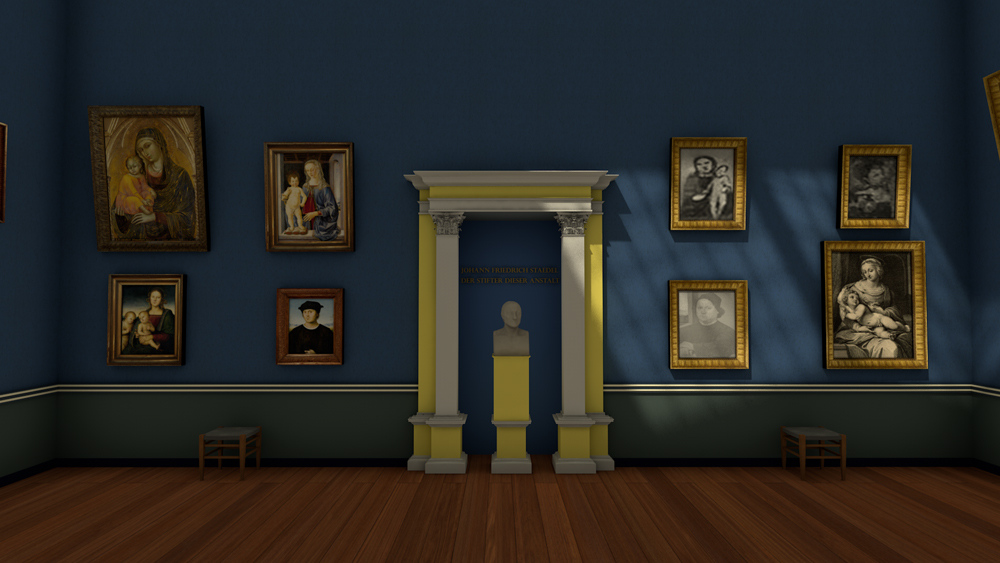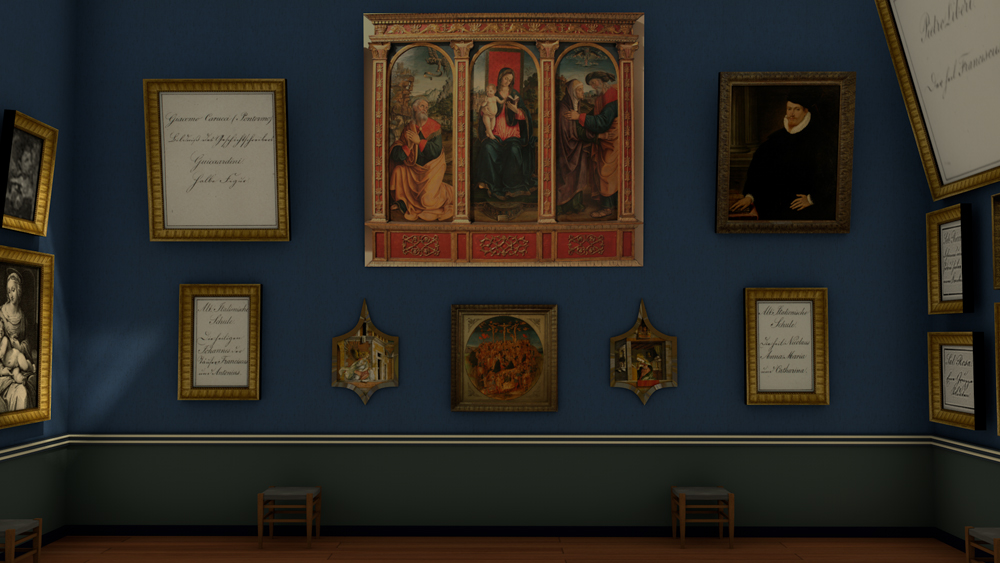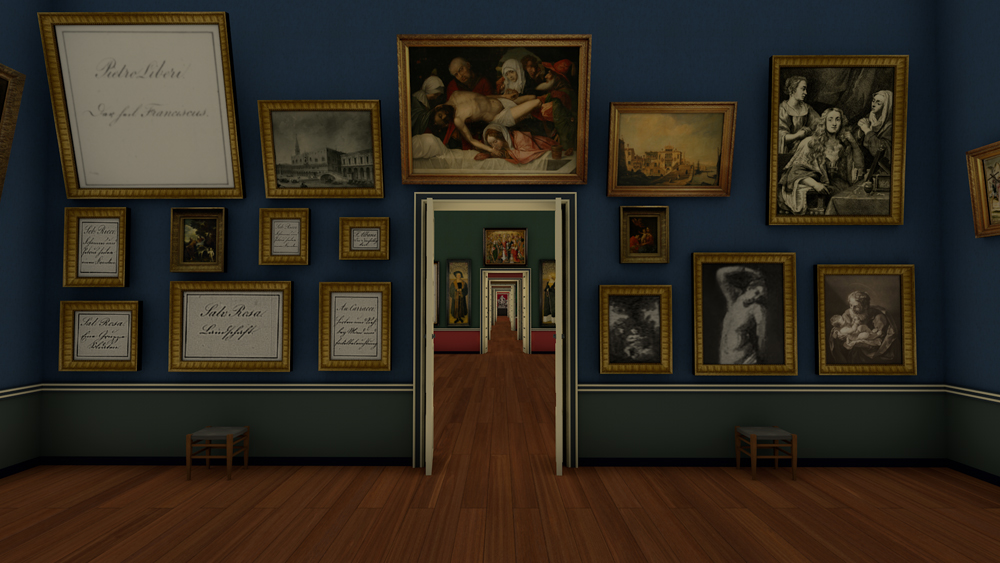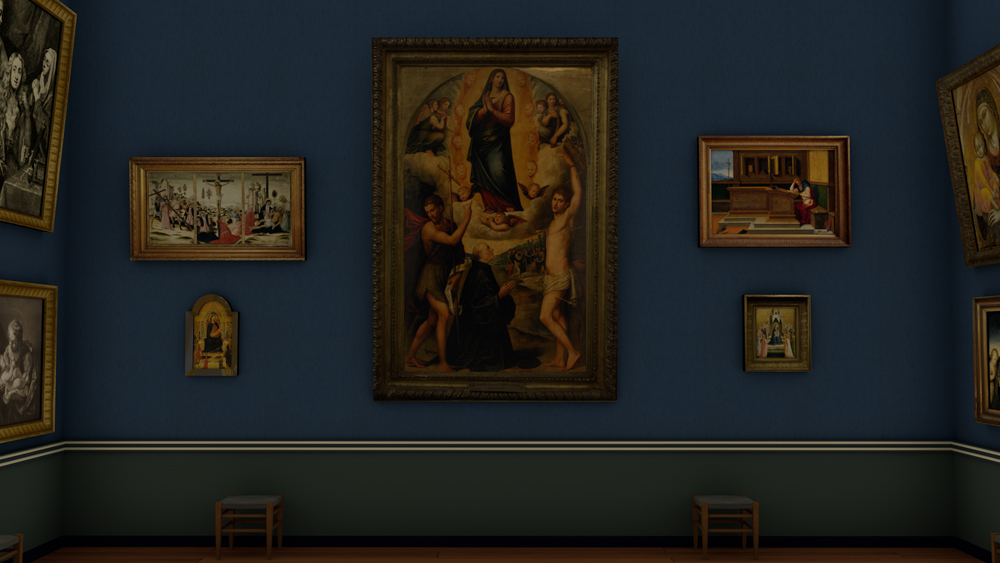1833 Italian room
High point
with the founder
Here, visitors were greeted by the “master of the house”. Johann Friedrich Städel, represented by his bust by Johann Nepomuk Zwerger, stood in the midst of Italian Renaissance paintings. The small “sanctuary of Italian art” (Kunst-Blatt 1834, p. 83) formed the counterbalance to the skylight rooms with Antiquities at the other end of the gallery. However, when the Städel Museum was opened on 15 March 1833, the room was peculiarly empty.
On the one hand, this condition reflects the comparatively minor role Italian paintings played in Städel's original collection, as well as during the period of the museum’s earliest acquisitions. On the other hand, it also shows that the people responsible were aware of this shortcoming when they were planning and designing the new museum building of 1833.
Although still poorly represented when the museum was opened, Italian painting was awarded the skylight room that, thanks to the architectural staging, had to be considered the most important of the painting gallery. This was done with the obvious intention of making it the focus of the then current acquisition policy.
Radical change
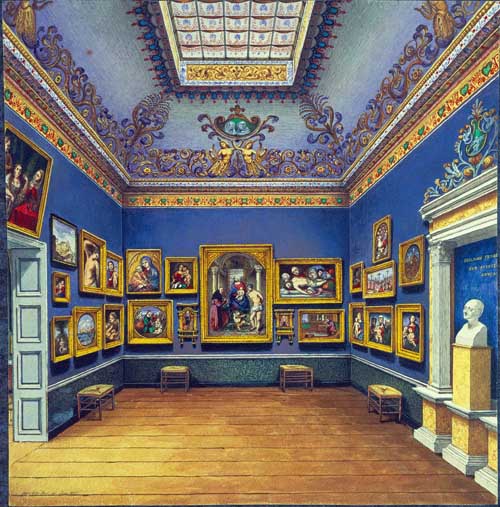
Decoration
The greatest artists
The painted ceiling was supposed to “roughly remind of the sixteenth century, of the so-called cinquecento” (Directory of 1835, p. 65).
The acanthus-shaped ornaments were likely inspired by the engravings after Raphael’s frescos in the Vatican Loggias, exhibited in the central rooms. Presented above these were medallions, each featuring two artist portraits. As in the Early German room, architects, sculptors, as well as painters were represented: visible above the door were presumably Bramante and Arnolfo di Cambio, while to the left – as seen in one of the watercolours by Mary Ellen Best – Giotto and Fra Angelico were shown. Above Städel’s bust, being the most prominent section of the room, Michelangelo and Raphael were depicted, while Donatello and Nicola Pisano were visible on the right.



